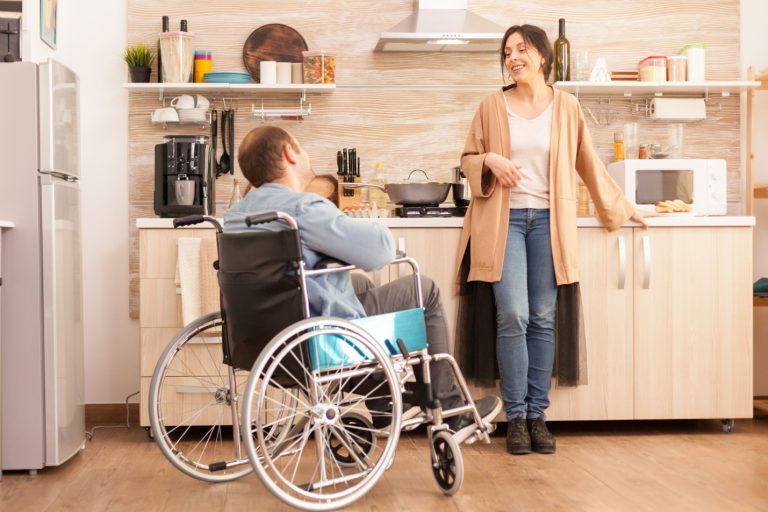Home design isn’t always just about appearance. Your home should also be functional, and allow everyone to enjoy the space comfortably, independently, and safely. Unfortunately, some homes have limitations when it comes to accessibility, which can make navigating the space challenging for people with health conditions or impairments.
For this reason, bathrooms, stairs, placement of fixtures, and certain surfaces can become dangerous and difficult for some to adapt.
The good news is you can eliminate most physical barriers with simple modifications or major renovations, depending on your and your family’s unique needs. Here’s everything you need to make your home more accessible and welcoming.
Ramp at Entrance
The first area to consider when making your home accessible is your entrance. If a step or stairs leads up to the front door, it can be challenging for people with difficulty using the stairs or using mobility aids to enter. Adding a ramp or lift that can provide easy access is important.
When adding a ramp or lift, measure the area correctly and ensure the products are the appropriate size and slope for the user.
There are many different ramp styles to suit each home’s unique needs. Choose a ramp based on your requirements and budget. For example, if you occasionally need a ramp, consider collapsible and portable ramps to allow for easy storage and place them when necessary and remove them when unused.
If you need a more permanent solution, consider a mini renovation project, and opt for permanent ramps that are bolted or attached in place.
Accessible Bathroom Products
The bathroom is another area that requires careful consideration for accessibility, as the place can be dangerous for many. The wet and slippery surfaces can result in slips, leading to injuries.
Consider renovating your bathroom and incorporating accessible products to make the space more comfortable and welcoming. It’s important to choose Americans with Disabilities (ADA) compliant products, as they are designed to meet ADA specifications.
Further, make sure to find a full-service provider who can offer end-to-end solutions. When you purchase from Freedom Showers, you get access to a wide range of bathroom products including Freedom ADA Roll in Shower Stalls, grab bars, handheld showerheads, and shower chairs to allow individuals with limited mobility to use the bathroom safely.
You should also consider using a Certified Aging in Place Specialist (CAPS) certified contractor who can streamline the installation process for you.
Wider Doorways & Hallways
The space between doorways and hallways can play a critical role in accessibility. Individuals who use wheelchairs, walkers, or crutches face difficulty passing through a narrow door or hallway. According to the U.S. Department of Justice Civil Rights Division, an entrance opening must be at least 32 inches wide or as wide as possible.
Although this guideline is for businesses, it also applies to residential properties. You could consider increasing the doorways and hallways to 36 inches or wider to accommodate wheelchairs and other mobility services. In addition, lever-style door handles are easier to operate than traditional doorknobs for those with limited hand mobility.
Lower Kitchen Appliances & Countertops
The kitchen can be a challenging area to navigate for those with mobility issues. Individuals with wheelchairs may face difficulty maneuvering if a table obstructs their path or a cupboard is too high to reach.
Consider installing lower countertops and cabinets to provide easier access for those in wheelchairs or with limited mobility and move things around and place them strategically. Additionally, touch-activated faucets and stovetops with front controls can make cooking and cleaning easier.
Making a home more accessible requires careful consideration of the individual’s needs and the home’s layout. Simple modifications, such as lowering kitchen appliances and installing accessible shower products, can make a significant difference and make your home a comfortable and accessible space for everyone.

